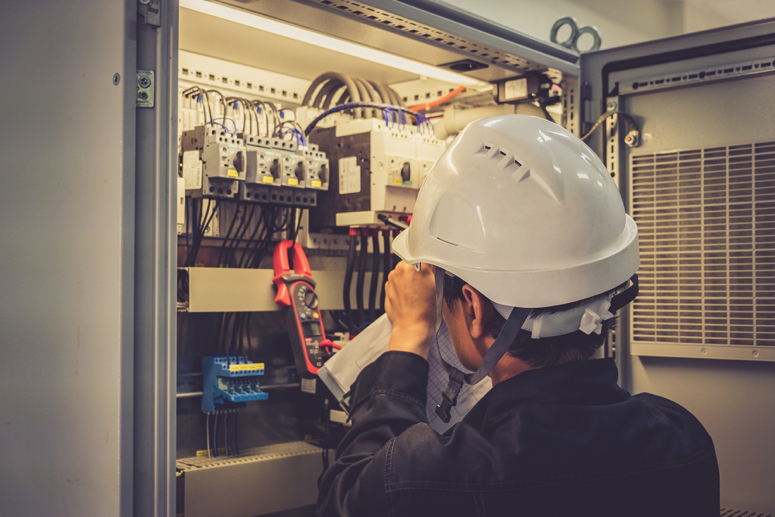Discover the Best in BRE Services for Electrical and Automation
Discover the Best in BRE Services for Electrical and Automation
Blog Article
The Ultimate Guide to Electrical Installation: Tips and Techniques for a Safe and Reliable Home Wiring System
In the world of home upkeep, couple of elements are as critical yet commonly overlooked as the electrical circuitry system. By exploring the subtleties of electrical safety and security actions and energy-saving methods, this thorough overview will certainly lose light on the ins and outs of home electrical wiring, empowering people to take charge of their house's electrical framework.
Recognizing Electric Precaution
To guarantee the safety and security of both individuals and home, understanding and implementing appropriate electric safety procedures is paramount in any type of home wiring job. It is essential to perform an extensive inspection of the electric system prior to starting any kind of electrical wiring task to determine potential dangers or problems that require to be attended to.
In addition, utilizing the suitable devices and tools is important for preserving safety and security during electric installments. Insulated handwear covers, voltage testers, and safety eyewear are a few of the standard safety and security equipment that should be worn to avoid electric shocks or mishaps. It is also vital to de-energize circuits prior to dealing with them and to classify all circuits and breakers plainly to stay clear of complication.

Vital Tools for Home Wiring
Guaranteeing the correct implementation of electrical safety and security measures in home electrical wiring jobs entails utilizing a particular set of necessary devices designed to help with the setup procedure properly and securely. Some of the key tools needed for home wiring projects include a voltage tester for examining live cords, cord strippers for eliminating insulation from cords, a wire cutter for exactly reducing wires to length, a screwdriver established for securing electrical elements, electrical tape for insulation and protecting connections, a cable television ripper for stripping cable television sheathing, and a multimeter for measuring voltage, current, and resistance.
Step-by-Step Electrical Installation Guide
Beginning an electric installment job needs precise planning and adherence to safety guidelines. Before starting any job, ensure you have a detailed plan describing the format of the electric system, including the placement of outlets, switches, and fixtures. Take into consideration the power requirements of each tool to figure out the suitable cable gauge and circuit breaker sizes.
The primary step in the installation her explanation process is to shut off the power supply to the location where you will certainly be working. Use a voltage tester to validate that the circuits are de-energized before touching any cords. Next, meticulously eliminate existing fixtures or electrical outlets and detach the cords.
When installing brand-new wiring, run cords through wall surfaces and ceilings, safeguarding them in position with ideal fittings. Comply with neighborhood building regulations and maker instructions for appropriate cord installation and connections. BRE Services. Make sure to classify wires for simple recognition and future maintenance

Troubleshooting Common Electrical Wiring Issues
Having actually completed the installation process as outlined in the previous subtopic, troubleshooting usual circuitry problems is a necessary ability for making sure the security and functionality of your electrical system. One usual problem is a tripped circuit breaker, often caused by overloaded circuits or a brief circuit. To repair this, situate the breaker panel, recognize the stumbled breaker by searching for the one not fully in the "on" placement, and reset it by turning it totally to "off" and after that back to "on." One more common problem is a defective outlet, defined by no power find more information or intermittent power supply. Guarantee the outlet is not managed by a switch, after that utilize a voltage tester to inspect for power. If there is no power, turn off the circuit, check the wiring links for any type of loosened or damaged cords, and replace the electrical outlet if necessary. Continually flickering lights can indicate loosened wiring links or an overloaded circuit. To address this, check and tighten up all wire official statement connections in the affected fixtures and buttons and redistribute the tons on the circuit to balance the electrical need. Consistently checking and quickly resolving these typical wiring problems will certainly maintain the safety and security and efficiency of your home electric system.
Tips for Energy-Efficient Electrical Solutions
For optimal energy effectiveness in electric systems, implementing wise methods and utilizing energy-saving modern technologies is critical. One crucial tip for accomplishing an energy-efficient electrical system is to update to LED illumination. Appropriate insulation and securing of home windows, doors, and electric outlets can likewise prevent energy loss, inevitably minimizing the work on electric systems.
Verdict
In final thought, carrying out proper precaution, utilizing necessary tools, following a detailed installation overview, repairing usual problems, and including energy-efficient ideas are essential for a secure and efficient home circuitry system. By sticking to these techniques, house owners can guarantee the longevity and functionality of their electric installments. It is essential to prioritize safety and security and effectiveness when it concerns electrical work in order to avoid prospective threats and to maintain a trusted electric system in the home.
Report this page